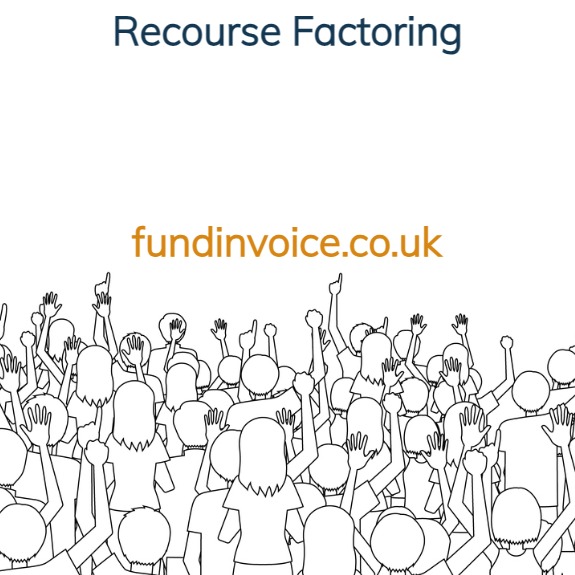Recourse Factoring
For companies that have many customers or who are dealing with good-quality debtors (with a low risk of the debtors failing), recourse factoring can be a perfect financing solution. This is the most common form of invoice finance which is what we call "recourse" or "with recourse".
What Is Recourse Factoring?
Recourse factoring delivers access to
- Prepayments against your outstanding sales invoices
- A credit control service provided by the funder.
It does this WITHOUT the need to pay any additional premium for protection against taking a bad debt.
How Recourse Factoring Works

Understanding how recourse factoring works begins with explaining what is known as a recourse period. This could be 90 days from the end of the month in which the invoice was raised, for example. This means that if you raise an invoice today, 27th April, the end of the month (30th April), plus 90 days would be 29th July. Therefore, if the debtor hadn't paid their invoice, dated 27th April, by 29th July, you would repay the finance against that invoice to the factoring company.
Factoring With Recourse In Practice
Occasionally, a customer may be concerned about using recourse factoring as they worry that they will have to repay the finance against a particular invoice if the debtor doesn't pay them. In practice, it tends to work slightly differently. If you are submitting all your invoices for funding and one invoice is "recoursed", the overall availability of funding against your ledger is reduced by that amount - rather than the user having to repay anything themselves.
An Example Of How Recourse Works
So if the invoice was for say £100, with an 85% prepayment you would raise the invoice on the 27th of April and, with the right provider, you could get funding that day of £100 x 0.85 = £85, as if the invoice had been partly paid immediately. Your availability with your factor would be £85 (ignoring charges for the sake of ease). You could draw a payment of that £85 into your bank account. If you have a large sales ledger of outstanding invoices, you can then scale up that funding against all that are eligible.
Now after you draw the availability of £85, your availability becomes £0. If we assume that your customer never pays, on the 29th of July that invoice will recourse (exceed the recourse period) and your availability will become -£85 i.e. you will be overdrawn.
As mentioned above, in practice the availability released from other invoices will tend to cover that shortfall.
Avoiding The Effects Of Recourse
Now you could repay that money, or as is more often the case, new invoices have been raised, they increase your availability and effectively cover that deficit. In this example, another new invoice for £100 will generate enough availability to return your available funding to £0.
Non-Recourse To Avoid This Issue
The simplest, most secure way to avoid the issue of invoices recoursing is to take the non-recourse factoring option i.e. factoring without recourse. With this type of facility, the factoring company will issue you with a credit limit for each new customer. Providing your level of invoicing outstanding to that customer remains within that limit, you will not experience recourse as you will be protected against the customer becoming insolvent and being unable to pay you.
Cost of Non-Recourse
There is a small additional charge for the protection that comes with non-recourse. This is called the CPE or "credit protection element" and typically starts from about 0.4% (+ VAT if applicable) of the value of invoices factored. There are also a few offers available that will reduce the cost of the CPE element. This may be a small price to pay for the peace of mind of knowing that you are protected against bad debts and the effects of recourse.






